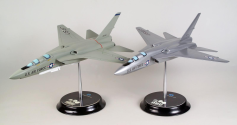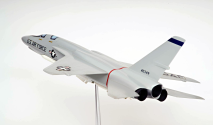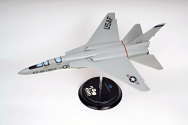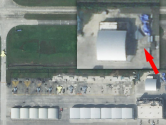I think if in retrospect it becomes genuinely taking the lead in global fighter development rather than symbolic, then raucous celebration would be appropriate.
To add to this:
Even if the three-engine design turns out to be true it says
nothing about China taking a lead in "global fighter development" because the challenges in development have long moved to other areas than coming up with new flying airframe designs.
For example:
Soviets who had extremely outdated design methods in 1980s were able in the to put both MiG-29 and Su-27 to flight very quickly and then couldn't match that speed with the development of other sub-components: engines of sufficient thrust and reliability, radars of sufficient range and resolution, airframe materials of sufficient resilience, sub-systems like FBW of sufficient reliability etc.
Fighter aircraft today are more flying computer networks with tons of dedicated software than engines and wings. Just because the airframe is new doesn't mean that the insides are.
China has unique needs stemming from its geography that may warrant a three-engine design if the MTOW of planned aircraft exceeds certain parameters and the speed requirement remains supersonic.
China doesn't have aircraft supercarriers and won't have for forseeable future because just building four, equipping them with sufficient aircraft and training the crews would require tremendous expenditure and organisational effort. The US was able to do so in the 1950s because it was coming off a great war and they had excess equipment and experience. Then it took almost three decades of Cold War spending and readiness to get to the point where it is today. You can look up what % of GDP was spent on the military then and Bretton Woods didn't end by itself.
So if China is to counter US strategy it needs to think practically, a bit like USSR did in the Cold War. And that means that developing a long-range fighter-bomber may be the most economical solution. It allows to use mainland bases (with refueling if necessary) and it may be enough to strike far beyond 2IC and as far as northern Australia.
If the primary use for the aircraft is to deliver stand-off munitions then it simply may not need to be too sophisticated to start service. A J-20 equivalent technologically with necessary range and payload would be sufficient. Penetrating those areas will be more like flying into the USSR over the pole than anything that we've become used to consider within 1IC. It will provide exactly the kind of challenge that USSR had to deal with during Cold War. Northern coast of Australia is 2/3 length of northern coast of Russia. And obviously there are other directions as well.
In short China may be thinking about its own Tu-22 or Su-34 because those aircraft have their use because of their size and range. Turnaround is important at war and servicing large bombers is more time-consuming than servicing small bombers.
China has very different minimum requirements compared to the US because of geography and minimum requirements define almost everything. They are the lowest energy state. Everything tends to gravitate toward it. So if three engines are a minimum requirement for some missions then there will be a three-engine design. If not, then no. We will see it when we will see it. Or not. There is really no ground-breaking revolution here and there is no need to be excited about trivial things. But one needs to understand that it is indeed a trivial matter.
The possibility that it ends up the Mig-25 equivalent to an opfor's (yet to emerge) F-15, cannot be excluded, for example.
MiG-25 was designed to intercept USAF recon and bombers. F-15 was designed to counter (what CIA thought) MiG-25 (would be) and not the other way around.
US is not behind in the 6th gen race. It might be ahead since it has flown some prototypes already.
It has slowed or paused to reevaluate things because the manned part of the 6th gen system planes are said to be too expensive per unit.
But if PLA unveils a flying 6th gen concept, then that will be the biggest Christmas gift to US MIC because Congress will throw lots of money at them to make sure US don't lose this race. They might just disregard the NGAD and F/A-XX price tag and push on.
They might. But it is not necessarily a natural decision to make.
US pushed with F-15 then switched to F-16 when it turned out that MiG-25 was misunderstood and F-15 was too expensive. F-22 was cut and F-35 ordered in large numbers instead.
My point is that choosing a cheaper option is more in line with the decision-making of the Pentagon than is commonly thought.
Pentagon chose the cheaper option more often than not. In fact it tends to choose the cheaper option most of the time. It's the idiots in the media who claim otherwise because for them anything the Pentagon orders is too expensive because they are such geniuses that would solve the problem at half the cost and twice the number. An honest assessment of Pentagon's programs indicates a much more reasonable approach than people imagine and a lot of the cost stems from specific requirements.
I don't see how China flying it's "6 gen" has to change anything, especially that we really don't know anything about US "6 gen". Unless you do, then by all means enlighten me.
This might be heading to a USSR type conclusion.
What is a "USSR type conclusion"? I hope you don't mean the propaganda story about how the US started an arms race which pushed the USSR into bankruptcy.





